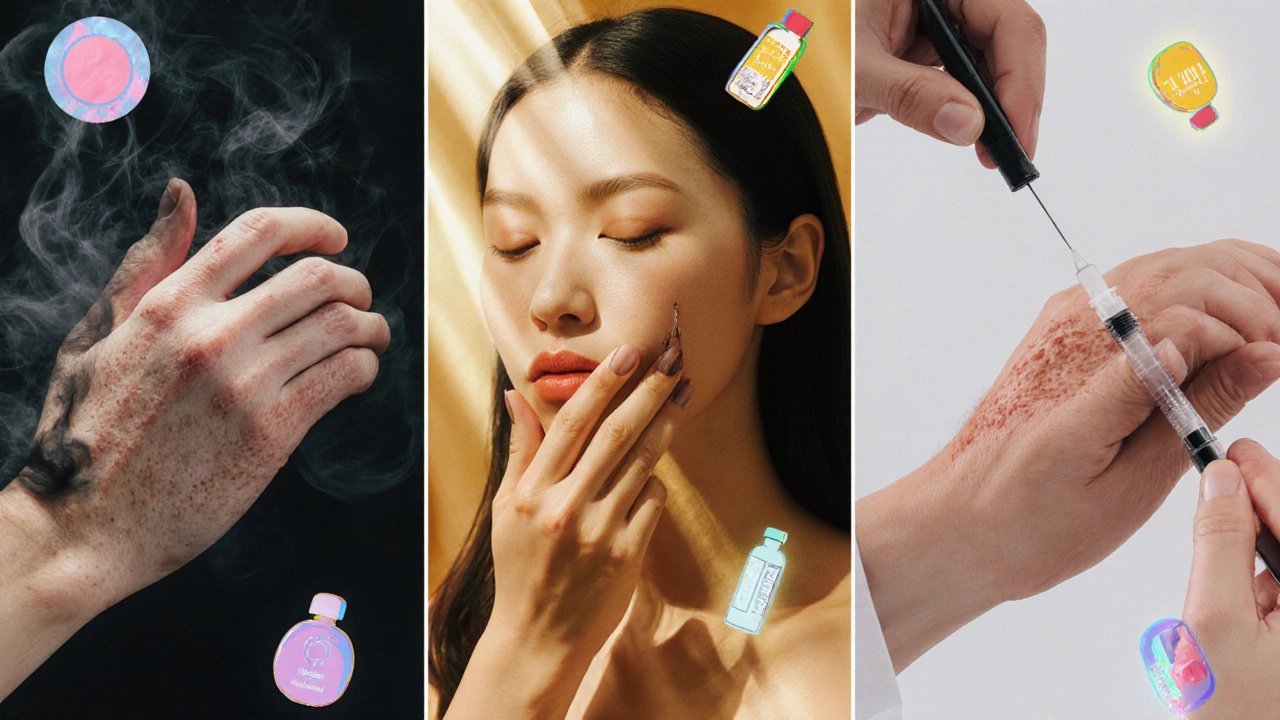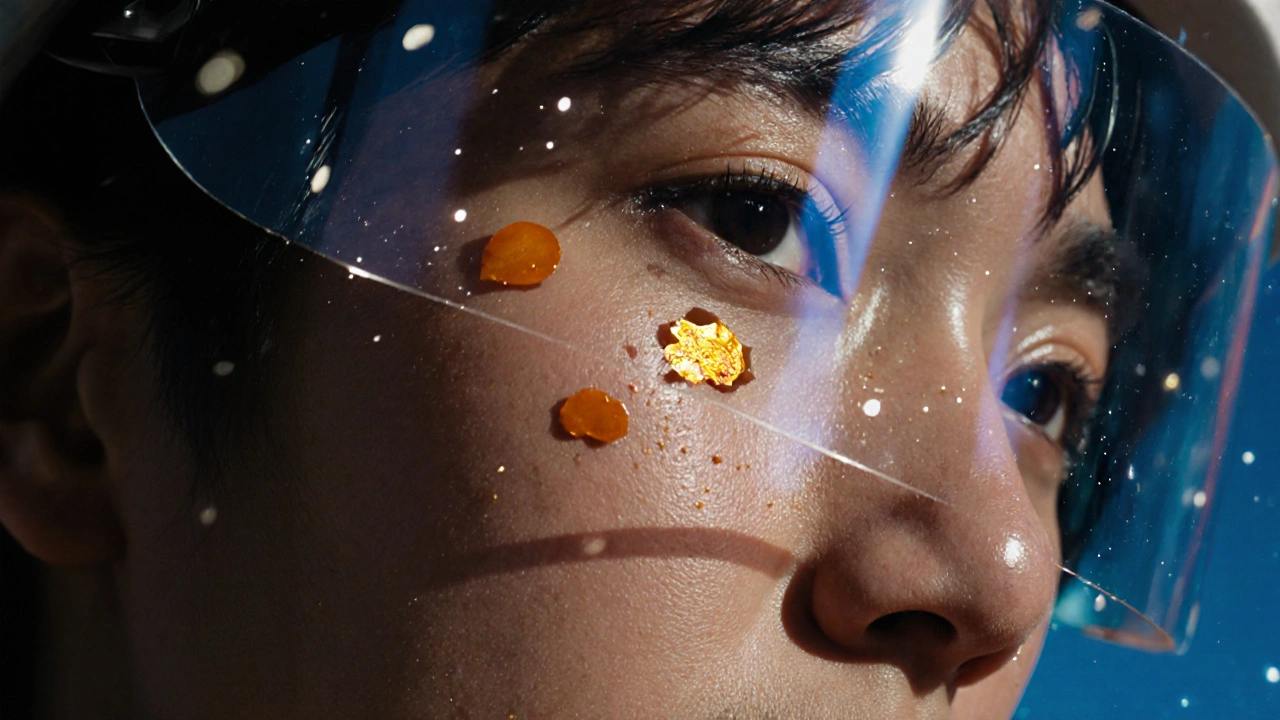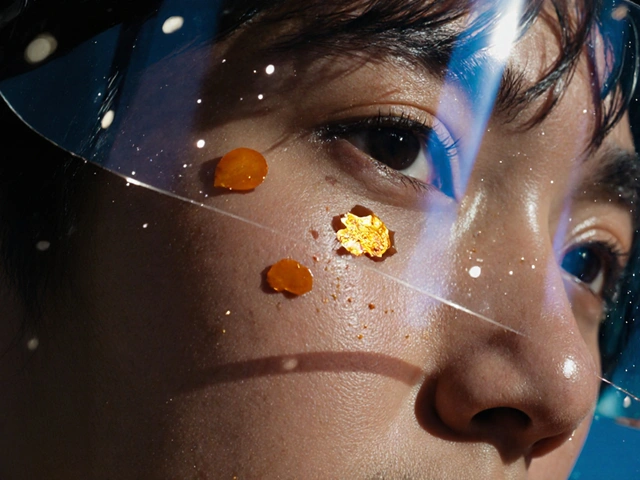Why Hyperpigmentation Hits Harder on Darker Skin
When you have darker skin, a pimple, cut, or even a scratch doesn’t just heal-it leaves behind a dark mark that can stick around for months, sometimes years. This isn’t just a cosmetic issue. It’s a real, persistent problem that affects confidence, daily routines, and even how people see themselves. The reason? Skin of color has more active melanocytes-the cells that make pigment. When these cells get triggered by inflammation, sun exposure, or hormones, they go into overdrive and dump out extra melanin. The result? Tan, brown, or gray patches that don’t fade easily.
This is called post-inflammatory hyperpigmentation (PIH), and it’s the most common form of darkening in people with skin of color. Unlike lighter skin, where redness fades quickly, darker skin turns darker after injury. Acne is the biggest trigger. A single breakout can leave behind several dark spots that last longer than the original pimple. Even aggressive scrubbing or picking at skin can make it worse. Sun exposure doesn’t help either. UV rays don’t just burn-they activate melanin production, making existing spots darker and new ones appear faster.
Melasma: More Than Just a Tan
If you notice symmetrical brown or gray patches on your cheeks, forehead, or upper lip, you might be dealing with melasma. It’s not caused by sunburn or injury-it’s hormonal. Pregnancy, birth control pills, and hormone replacement therapy are common triggers. Melasma is far more common in women, especially those with Fitzpatrick skin types IV to VI. It’s stubborn, often returning even after treatment. And unlike PIH, which fades when the trigger is removed, melasma can be a long-term challenge.
What makes melasma tricky is that it doesn’t respond the same way to every treatment. Some lightening creams work for PIH but barely touch melasma. That’s why dermatologists often combine treatments. Tinted sunscreens with iron oxides are now recommended because they block not just UV rays, but also blue light from screens-a hidden culprit that can worsen pigmentation in darker skin tones.
Keloids: When Scars Grow Beyond the Wound
While hyperpigmentation leaves flat dark spots, keloids are different. They’re raised, thick, rubbery scars that don’t stop growing after a wound heals. They can appear after piercings, acne, cuts, surgeries, or even minor skin irritation. People with skin of color are 15 times more likely to develop keloids than those with lighter skin. They’re not dangerous, but they can be painful, itchy, and deeply distressing-especially when they form on visible areas like the chest, shoulders, or earlobes.
Keloids don’t fade on their own. In fact, they often get bigger over time. And here’s the catch: trying to remove them with surgery alone can make them worse. Cutting into a keloid often triggers even more scar tissue. That’s why treatment needs to be strategic. Steroid injections, silicone sheets, pressure therapy, and laser treatments are often used together to flatten and soften them. Early intervention is key-the sooner you treat a growing keloid, the better the outcome.
The Sun Is the Enemy-No Exceptions
Daily sunscreen isn’t optional. It’s the foundation of every treatment plan for hyperpigmentation and keloids in skin of color. Many people assume that because their skin doesn’t burn easily, they don’t need protection. That’s a dangerous myth. UVA rays penetrate deep into the skin, triggering melanin production regardless of skin tone. Even on cloudy days, or when you’re indoors near windows, UV exposure adds up.
For darker skin, not all sunscreens are created equal. Broad-spectrum SPF 30+ is the minimum, but look for ones with iron oxides. These ingredients block blue light from phones, laptops, and LED lights-something newer research shows can worsen pigmentation. Tinted sunscreens are especially helpful because they blend naturally with deeper skin tones and provide extra coverage. Reapply every two hours if you’re outside. Wear wide-brimmed hats, long sleeves, and seek shade when possible. Sun protection isn’t just about preventing burns-it’s about stopping dark spots before they start.
Treatment: What Actually Works
There’s no one-size-fits-all solution. What works for someone with light skin might irritate or even darken darker skin. That’s why treatments need to be tailored.
- Topical lighteners: Hydroquinone (2-4%) is still a gold standard for PIH, but it’s not for long-term use. Alternatives like azelaic acid, vitamin C, kojic acid, and niacinamide are gentler and effective for ongoing use. Tretinoin (a retinoid) helps speed up cell turnover, fading dark spots over time.
- Newer options: Tranexamic acid (topical or oral) and 5% cysteamine cream have shown strong results in recent studies, especially for melasma and stubborn PIH.
- Procedures: Chemical peels and lasers can help-but only when done by someone experienced with skin of color. Wrong settings or techniques can cause burns or make pigmentation worse. Microdermabrasion and gentle glycolic acid peels are safer starting points.
- Keloid-specific care: Steroid injections (like triamcinolone) are the first-line treatment to shrink keloids. Silicone gel sheets worn daily for months can prevent new keloids and soften existing ones. Pressure earrings or garments help after piercings or surgery.
Never rush. Treatments take 3-6 months to show real results. Skipping sunscreen or stopping treatment early is the #1 reason people see no improvement.
What to Avoid
Some products and habits make hyperpigmentation and keloids worse. Stay away from:
- Harsh scrubs or exfoliants-these cause micro-tears that trigger PIH
- At-home chemical peels or laser devices-too risky without professional oversight
- Skipping moisturizer-dry skin leads to more inflammation
- Using old or expired skincare-oxidized vitamin C or rancid oils can irritate skin
- Trying to pop pimples or pick at scabs-this is the #1 cause of lasting dark spots
Also, avoid skin-lightening creams sold online that contain mercury, hydroquinone above 4%, or steroids. These can cause permanent damage, including ochronosis-a condition where skin turns blue-black.

When to See a Dermatologist
If you’ve been treating dark spots for more than 3 months with no change, or if a scar is growing beyond the original injury, it’s time to see a dermatologist. Don’t wait until it’s affecting your self-esteem or daily life. Dermatologists who specialize in skin of color can create personalized plans that combine the right topical treatments, procedures, and lifestyle changes.
They’ll also check for underlying causes: Is your acne under control? Are you on medications that darken skin? Are you using the right sunscreen? Treating the trigger is just as important as treating the spot.
Real Talk: Patience Is the Real Treatment
There’s no magic cream that erases hyperpigmentation overnight. Keloids won’t vanish in a week. Progress is slow, and setbacks happen. A spot might fade, then darken again after a sunny day. A keloid might shrink after an injection, then swell slightly again. That’s normal. The goal isn’t perfection-it’s improvement. Consistency with sunscreen, gentle skincare, and professional guidance makes all the difference.
Many people with skin of color feel like their concerns are dismissed or misunderstood. But this isn’t just about appearance. It’s about skin health, mental well-being, and quality of life. You deserve care that sees you fully-and treats your skin the way it needs to be treated.
Why do dark spots last longer on my skin than on my friend’s?
Darker skin has more active melanocytes, which produce more pigment. When skin gets inflamed-from acne, cuts, or even dryness-these cells go into overdrive and make extra melanin. This leads to dark spots called post-inflammatory hyperpigmentation (PIH). Lighter skin doesn’t produce as much pigment, so inflammation usually fades without leaving a mark. In darker skin, PIH can last months or years without treatment.
Can I use hydroquinone forever to treat dark spots?
No. Hydroquinone is effective for short-term use (usually 3-6 months), but long-term use can cause ochronosis-a rare but serious condition where skin turns blue-black. Many dermatologists now use alternatives like azelaic acid, vitamin C, niacinamide, or tranexamic acid for ongoing maintenance. Always use hydroquinone under a doctor’s supervision.
Are lasers safe for darker skin tones?
Some lasers are safe, but only when used by providers experienced with skin of color. Nd:YAG and PicoSure lasers are often used for pigmentation because they target pigment without overheating the skin. But wrong settings or inexperienced providers can cause burns, blisters, or worse pigmentation. Always ask about the provider’s experience with your skin tone before any laser treatment.
Can keloids be removed completely?
Complete removal is rare. Keloids have a high recurrence rate-even after surgery. The goal is to flatten, soften, and reduce symptoms like itching or pain. Combination treatments work best: steroid injections, silicone sheets, pressure therapy, and sometimes low-dose radiation. Early treatment gives the best chance of controlling growth.
What sunscreen should I use if I have dark skin?
Look for broad-spectrum SPF 30+ with iron oxides. These block UVA, UVB, and blue light from screens. Tinted sunscreens are ideal-they blend with darker skin tones and provide extra pigment protection. Avoid white-cast formulas; many now come in shades that match deeper skin tones. Reapply every 2 hours if you’re outside.
Does diet or supplements help with hyperpigmentation?
There’s no strong evidence that diet alone clears dark spots. But antioxidants like vitamin C and E may support skin health. Don’t rely on supplements as a treatment. Topical treatments and sun protection are far more effective. Some supplements (like high-dose vitamin C) may interact with medications-always check with your doctor.
Next Steps: Your Action Plan
Start today:
- Switch to a tinted, broad-spectrum SPF 30+ sunscreen with iron oxides. Use it every morning, even indoors.
- Stop picking at acne or scabs. Use a spot treatment with benzoyl peroxide or salicylic acid instead.
- Introduce a gentle vitamin C serum or azelaic acid cream at night.
- If you have a growing scar, see a dermatologist before it becomes a keloid.
- Track your progress with monthly photos. Improvement takes time-but you’ll see it if you stick with it.
Your skin deserves care that understands it-not just treats it. You’re not alone in this. Millions of people with skin of color manage these conditions every day-and with the right approach, you can too.




Bruce Bain
November 19, 2025 at 17:43Man, I never realized how much sun exposure was making my dark spots worse. I thought since I don’t burn, I was fine. Guess I’ve been lazy with sunscreen for years. Time to switch to that tinted stuff with iron oxides. Thanks for the wake-up call.
benedict nwokedi
November 21, 2025 at 00:10Let me guess-big pharma pushed hydroquinone because it’s profitable. Now they’re pushing ‘alternatives’ like niacinamide and tranexamic acid to keep you hooked on monthly prescriptions. Iron oxides in sunscreen? That’s not science-that’s corporate branding. Blue light from screens? Please. It’s all about control. You’re being manipulated into buying more products. Wake up.
deepak kumar
November 21, 2025 at 06:30From India, here-melasma is real. My mom had it bad after pregnancy. We used kojic acid + sunscreen daily. No magic, just patience. Also, don’t skip moisturizer. Dry skin = more inflammation = more dark spots. And yes, lasers can work, but only with dermatologists who’ve treated brown skin before. Ask for before/after pics of patients with your skin tone. Don’t trust anyone who says ‘it’s the same for everyone’.
Dave Pritchard
November 21, 2025 at 14:35This is such a needed conversation. So many people think ‘dark skin doesn’t need sunscreen’-and it’s dangerous. I’ve seen clients with PIH from just sitting by a window all day. Sunscreen isn’t optional. It’s the base. Layer everything else on top. And if you’re picking at pimples-stop. I know it’s hard, but your future self will thank you. You’re not alone in this.
kim pu
November 22, 2025 at 18:32Okay but who decided blue light was the enemy? Like… did someone get a grant to prove that your phone is secretly giving you melasma? And why is everyone suddenly obsessed with ‘iron oxides’? I think this whole thing is just a marketing scheme to sell $40 tinted sunscreens. Also, keloids are just your body being extra dramatic. Stop treating them like they’re a medical emergency. Maybe chill out? 😏
malik recoba
November 24, 2025 at 00:42Just wanna say… I used to pick at my acne all the time. Big mistake. Dark spots stayed for over a year. Started using niacinamide + sunscreen and it’s slowly fading. Still not perfect, but better. Also, I keep forgetting to reapply sunscreen. Gonna put a reminder on my phone. Thanks for the tips. I needed this.
Sarbjit Singh
November 24, 2025 at 23:26Bro, keloids are the worst. I got one after ear piercing. Used silicone sheets for 6 months. It’s still there, but way flatter and less itchy. Don’t give up. And sunscreen? Non-negotiable. I use SPF 50 even when it’s raining. 😊
Angela J
November 26, 2025 at 14:54Wait… so you’re telling me the government doesn’t want us to know that UV rays are just a distraction? That the real cause of PIH is the fluoride in tap water? And that dermatologists are paid by sunscreen companies to scare us into buying tinted lotions? I’ve been reading forums… and the truth is… they’re hiding the real solution. It’s not sunscreen. It’s detoxing your lymphatic system. With celery juice. And crystals. I know, I know… but think about it.
Sameer Tawde
November 28, 2025 at 04:52Start small. Sunscreen. No picking. Moisturize. That’s it. No need to buy 10 products. Just do those 3. In 3 months, you’ll see a difference. Trust the process. You got this. 💪